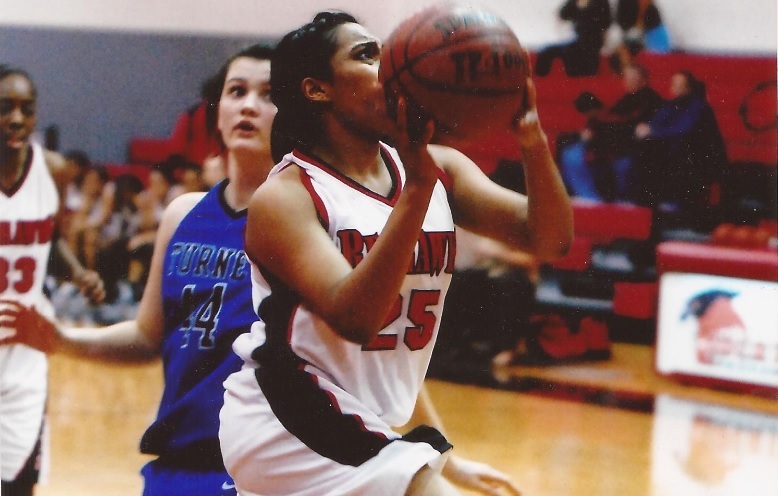The deepest rooting of my passion in wanting to be a lawyer resides in my childhood athletics. It sounds trivial at first, and maybe even a bit cliché, but the Boys and Girls Club of Richardson, Texas was a home away from home for me: a place where the sport of basketball was used as a hobby for some such as myself but a key to higher education for most others. My thirteen sisters in the shared love of the game, left in single parent households or living with my also single-parent coach, opened up my young eyes to a world I never knew existed. The growing awareness I received from the privileges I had has a child now make me realize why I want to combine my passion of sports into my longstanding passion for the legal field. I want to defend and assist the community I grew up in with the justice I hope to acquire in law school. Participating in the volunteer legal aid program in my adolescence also gave me the chance to give back to a less fortunate community, and the advocating I did for the other side felt as if I were fighting for something bigger than a profession but a pathway that tried to help the people in my past and people like them escape the exploitation of poverty in the future.
A large portion of my mental and physical growth as a child was fostered in a small city where the majority race was African American, and I, the only Indian-American child for blocks, felt isolated from a culture I did not quite understand. I distinctly remember feeling like an outsider just because I was unaccustomed to black traditions. Yet, I also felt like an insider because of the “relevant” color of my skin. I was brown. They were black. And they told me “It’s okay; you’re basically one of us anyway since you aren’t white.” What did that mean to a young girl at the age of 8? I was automatically stereotyped into a race instead of being shut out of one as I had previously been from my white American schools. The next 10 years of my life was a struggle to find myself and identity against these different cultures, races, and traditions–none of which I felt completely a part of. I was continually entangled between the push and pull of assimilating into a race that wasn’t mine: beginning with my segregated catholic school, to facing the black community in the passion I had for sports, and then finally hiding the true culture and heritage my family taught me to embrace that we came from.
There were often times when my parents, who were still together in marriage, would come and sit during my basketball practices. The girls on my team would ask if my parents were still in love and if that is why they were still together. I would tell them that my parents had an arranged marriage and grew into love only after they wed. My teammates were appalled at such a demanding and traditional instance, and I, who had envisioned a marriage such as my parents’ for myself someday, now grew increasingly skeptical that this seemed to not be the norm for people living in America. Other times, after tournaments, the girls would come over to my house. I was unaware that my two story home in the suburbs was a part of a “privileged” scheme. Our sub-par middle class stature was actually low for most of my parents’ doctor and lawyer Indian friends, yet our lifestyle consisting of a stay-at-home mom and engineer father seemed to be an extremely prosperous rarity for my teammates.
I never thought I was given anything less than deserved, but I think growing up in the middle of what now seemed like 3 cultures had me eager to find the similarities and differences in race, economic standing, and professions. I have already felt misunderstood in the cross generation of immigrant parents and being the first of my family born in America, and it only became increasingly difficult with the added cross-cultural associations of the black community I was starting to be a part of as well. I have undergone many stereotypes through the integration of all three cultures, never being fully “American” because of the color of my skin and immigrant family. Never being fully “Indian” because I was actually born in the states and not in India where my parents held citizenship as well. And never fully “African American” because, just because I was athletic and decently talented in the sport of basketball, in my 100% black team besides myself, I was still a few shades under the color and culture requirement to be considered. Law, however, sees no color. It sees justice. And I hope to stand in this long held passion of mine to help others who are growing in America for opportunity like I am.
After I graduated high school, I decided to hang up my career as an athlete and pursued my academics more rigorously instead. Coach had always told me that I would go somewhere for my brain, and that I didn’t need an athletic scholarship. I attended the University of Texas at Austin: a Division 1 school. And every single one of my teammates that I started with, also attended a division 1 school with an athletic scholarship. I was fortunate that my background allowed me to rely on something else to get to where I wanted to be. But for my teammates and friends, and often for myself as well, sports is so much more than fun and games. It’s a way of life. It is socialization mechanism. It increases opportunities for education. And like it did for me, it bridges religion, race, and culture in a very communal way. This is how it all started for me. And this is why I feel so connected. I want to continue on this journey. At my time at UT, I wrote about the cross of sport in foreign countries such as India, and China, and Brazil. Maybe I will share that dissertation with you all some time, but now in law school, I have been blessed with so much more opportunity to make this industry more appealing to the public OTHER than just sports fans, to underscore the importance of education, and to bring ALL types of people together with stories and interactions. This is my “why.” I hope the rest of this blog will explain the “how.”
Edited by Leigh Ann Skaggs


